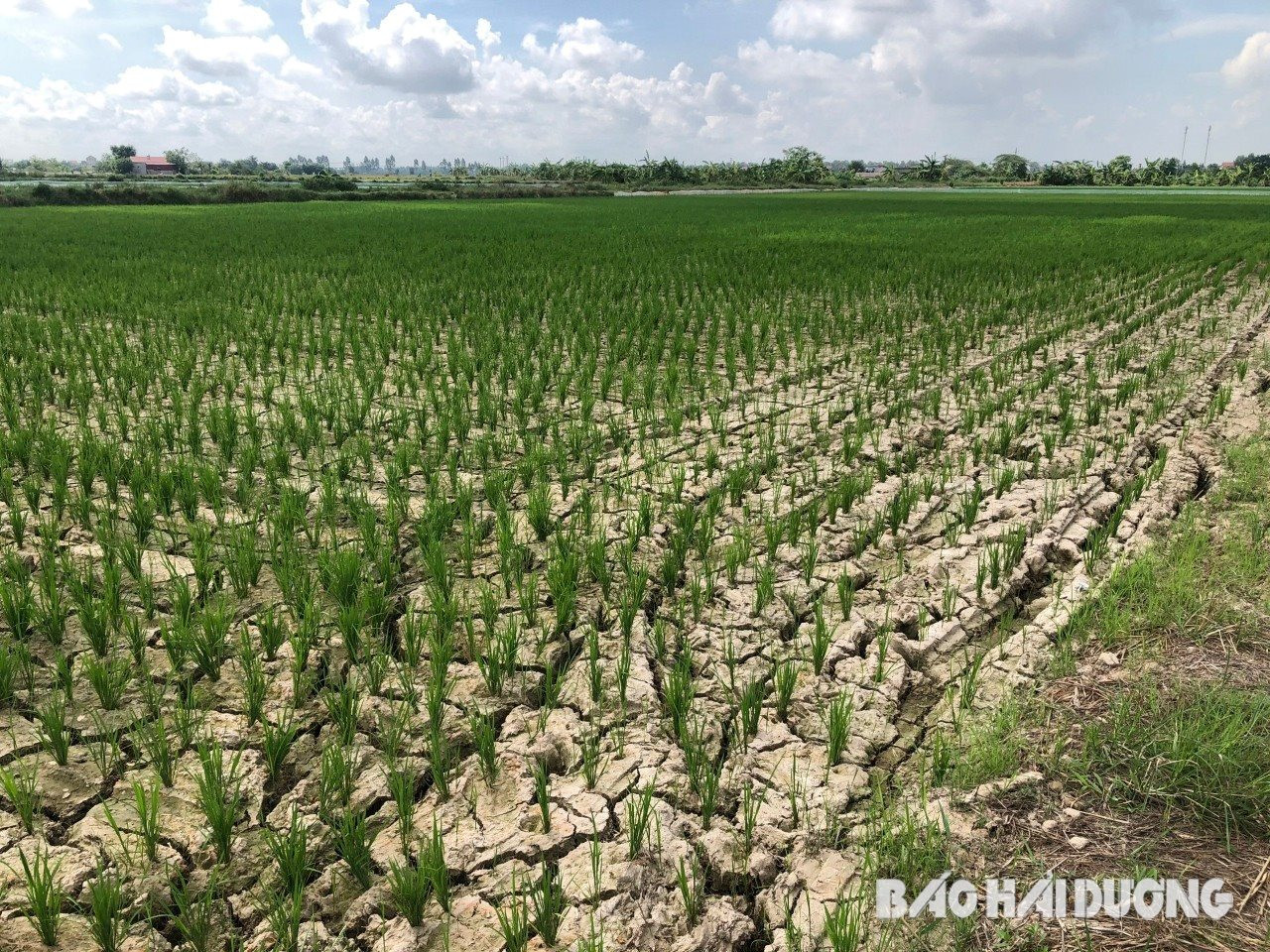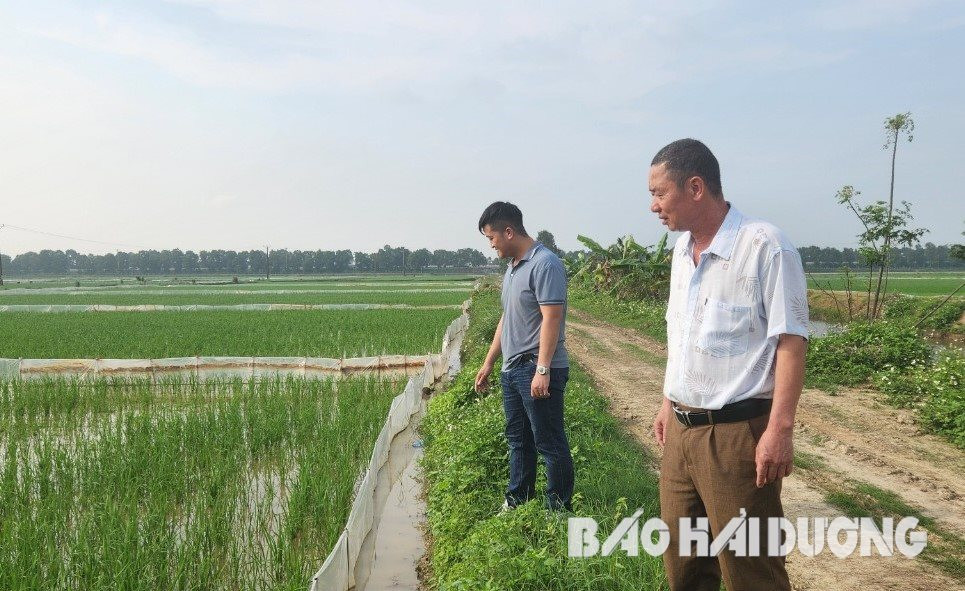Binh Giang district (Hai Duong) has proactively implemented many measures to prevent drought in the spring crop of 2024.

Binh Giang is a special locality where the water source for agricultural production depends entirely on the Bac Hung Hai irrigation system. However, many times the water in this system is polluted and cannot be used to irrigate rice, so droughts are likely to occur.
Why worry about the appointment?
Water sources for agricultural production in Binh Giang are taken from three main canals of the Bac Hung Hai system: Kim Son, Dinh Dao and Tay Ke Sat. In addition to the pumping stations that take water directly from the main canal, the pumping stations supplying water to the middle irrigation canal face difficulties due to siltation of the canal. Meanwhile, the cultivated land is high and low, alternating and uneven. The high areas are located along provincial roads 392, 394 and 394C and south of Nhan Quyen and Binh Xuyen communes. In recent years, the weather has been complicated, the water level of the canals leading to the pumping stations depends on the water level of the main rivers of Bac Hung Hai, at times the water level drops below 1 m.
During the process of taking water from the Bac Hung Hai system, when the water source is heavily polluted, it will be impossible to take water for irrigation. The downstream area is also often affected by salinity, so it is impossible to take water upstream from the Dinh Dao canal.
According to the assessment of the Binh Giang District Irrigation Works Exploitation Enterprise, some areas have been lacking water for winter-spring irrigation for many years, such as Binh Xuyen, Nhan Quyen, Hong Khe, Thai Hoa, Hung Thang, Vinh Hong with a total area of about 600 hectares. The reason is that this area is at the end of the irrigation water source while some pumping station suction tanks and water intakes of the commune are high. In 2023, the drought situation is complicated, even in the rainy and stormy season, there have been local droughts in some localities such as Thai Hoa, Binh Xuyen, Binh Minh communes, etc.

According to Mr. Do Phuong Duy, Deputy Director of the Binh Giang District Irrigation Works Exploitation Enterprise, from March 11 to 27, the Bac Hung Hai irrigation system section passing through the district has turned black, giving off a foul odor, and cannot provide water for irrigation of rice. However, during this period, there has been rain, so the rice fields have not yet faced the risk of lacking water for irrigation. If the Bac Hung Hai irrigation system continues to experience prolonged black water and no rain, there is a high possibility that some areas will suffer from drought.
Build detailed plan
Mr. Le Van Ly, representative of Thai Hoa Commune Agricultural Service Cooperative, said that this winter-spring crop, the whole commune has 518 hectares of rice. The winter-spring crop is also the most stressful crop in terms of irrigation water. Last year, 30 hectares of rice in the commune suffered from drought. To proactively cope with and handle the drought that occurred in this winter-spring crop, the enterprise installed 2 oil pumps in Thai Hoa commune with a total cost of nearly 100 million VND. More than ten days ago, these pumps were mobilized to irrigate about 30 hectares of rice in the commune. These two pumps are not fixed but can be moved to other areas in the district if drought occurs.
.jpg)
The installation of oil pumps in Thai Hoa commune is just one of many measures deployed by Binh Giang district to proactively respond to drought in this winter-spring crop. Binh Giang district implements the motto of prevention first, against subjectivity, negligence, and lack of responsibility. The district's Irrigation Works Exploitation Enterprise proactively monitors closely the water level of the Red River and the Bac Hung Hai irrigation system to prevent drought in a timely manner. The district also identifies drought prevention as a key task throughout the 2023-2024 winter-spring crop, which is the responsibility of all levels, sectors, and people.
To ensure irrigation water for more than 5,881 hectares of rice, Binh Giang district has 16 irrigation pumping stations managed by the district's Irrigation Works Exploitation Enterprise and 103 irrigation pumping stations managed by agricultural service cooperatives.
The district has directed the dredging of irrigation rivers, canals, suction tanks and local high points on the canals. Timely remove water fern, obstacles, clear the flow to ensure smooth water flow to the suction tanks of pumping stations. In the long term, it will combine agricultural and irrigation measures in production, arrange crop varieties, sowing time suitable for each field and the pumping capacity of the pumping station when the water level of the Bac Hung Hai irrigation system is low. In addition, Binh Giang district also developed a detailed plan, identifying key points in each location and commune to install field pumps to pump water. Workers at the pumping station of the enterprise and the commune are assigned to be on duty at the pumping station even on holidays and Tet to perform the task of pumping against drought when needed...
HOANG QUAN